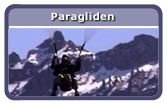|
Uganda:
Green but dangerous?
Beforehand
I did not know what to think about Dominique's idea to go to Uganda
for a safari and to do volunteers work. But now we've been there
I can say it's a beautifull country, without real problems for the
traveller.
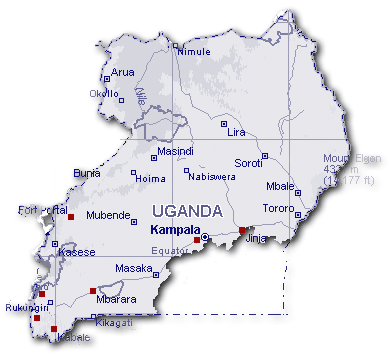
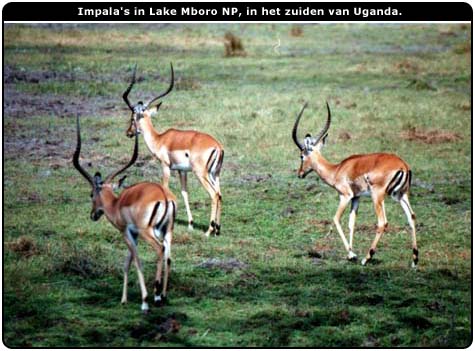
When we decided to go we chose for a 3 week
holiday which left only 3 weeks to do volunteers work for Dominique.
We booked tickets and arranged to stay at a backpackers hostel,
near the orphanage where Dominique was going later. Then we got
a chance to buy permits to visit the last mountain gorilla's. This
was a chance we had to take (normally you have to book 3 months
in advance) Since it's really hard to reach the most southern part
of Uganda, where the gorilla's are, we booked a 10 day safari around
our permit date en the journey was complete. A day after we arrived
in Kampala, we left for the first National Park: Lake Mboro.
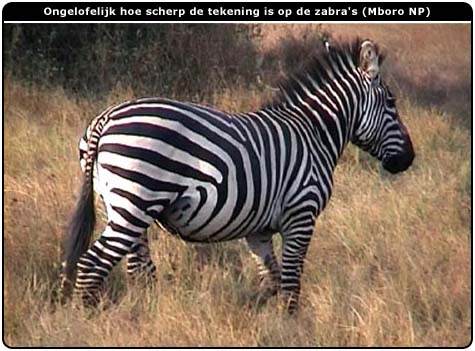
This is the only park in Uganda with zebra's
(clever marketing). In this park we also found Hippo's, warthogs,
moose, impala's, Uganda kobs, waterboks, topi's, fish eagles, and
many other little animals. At night the warthogs and hippo's would
graze around our tent. It's hard to sleep that way the first night:
you can hear everything.
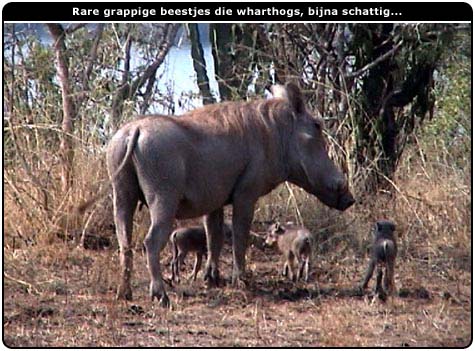
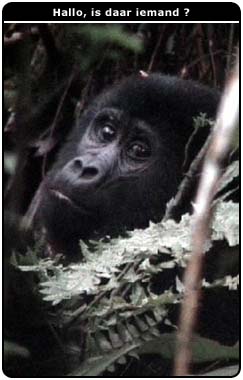 |
|
The
next stop was also the most important one: Bwindi Inpenetratable
Forrest. Here there are 300 of the last 600 mountain gorilla's
in the world. For $280,- per person (just for the permit) you
can visit them vor exactly 60 minutes. This is an investment
that's really worth it ! On a day only 6 people per group (3
groups: M, Ha, Hb) can go and find them. We will never forget
that on july 19th 2002 it was our turn to visit the Hb group. |
We were lucky that we found them pretty fast (other groups walked/climbed
for 4.5 hours.) After some manouvering we had the perfect location.
On the left, at only 4 meters, was the silverback (male leader of
the group of 9 gorilla's in total). He was accompanied by 2 females
and a child. On the right was another female with a baby and all of
a sudden another female came right at us, stopped at a 2 meter distance,
made a nest and sat down with her back turned to us !
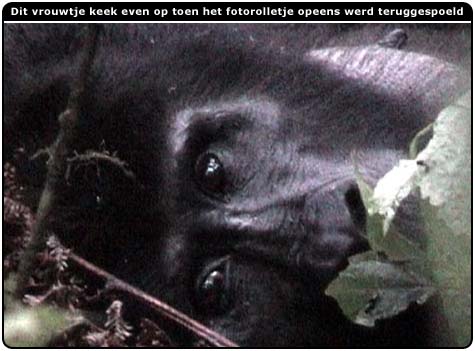
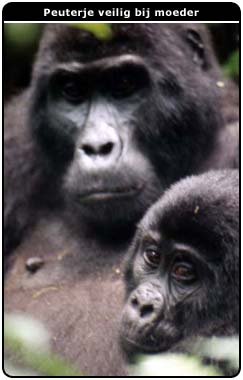 |
|
After
59 minutes it's really time to leave. When walking down the
little hill, we encountered another female and her toddler.
In the end we saw the entire group.
Films of 800-1600 asa are highly recommended, including a good
camera with a 300 mm lens. Of couse a stand or a really steady
hand are helpfull, but the circumstances are so though that
you should count on about 20% of the pictures to be OK. In the
end you always have some good ones that remind you of all the
others... |
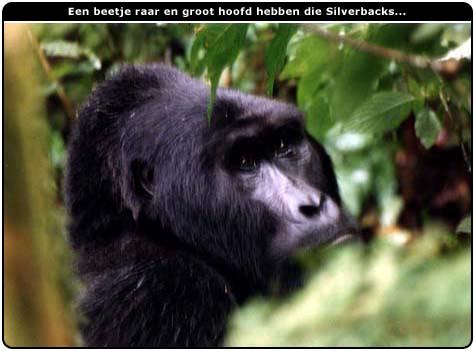
Although the
picture above is of a much higher quality than the other ones, it
is taken with the exact same camera. That is the luck you need to
have in the moment. Beautifull this enormous strange head. Watch
a movie of the silverback
(336 kb) or the
mother
and toddler (1.1 mb). You need the
Quicktime
plugin for this.
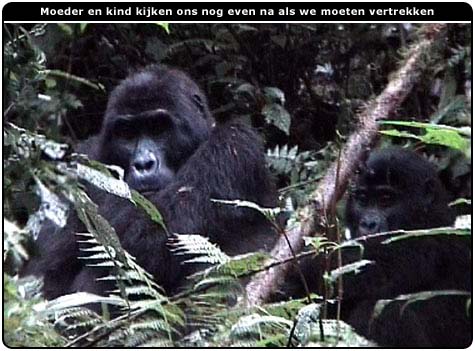
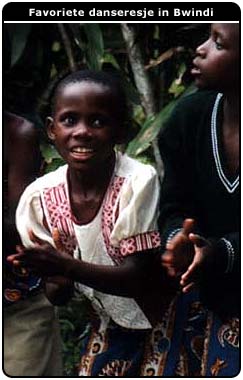 |
|
Back
in the camp the safari tourguides arranged a dance performance
for us. A group of at least 60 orphans danced for us. This was
by far the most impressive performance we saw during this holiday.
Emotion all over the dancefloor...
This little girl won our hearts. She showed her eagerness to
do well, despite all the misery she might have gone through;
very enthousiastic and real ! |
Also on Bushara
Island in Lake Bunyonyi (near Kabale) we were treated to some local
dance. In a beautifull setting we saw a lot of dancing and jumping.
Dominique and Hope tried to join them for one song...
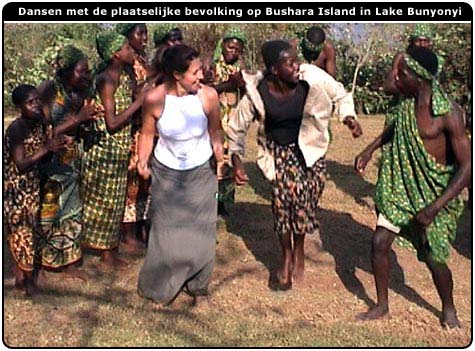
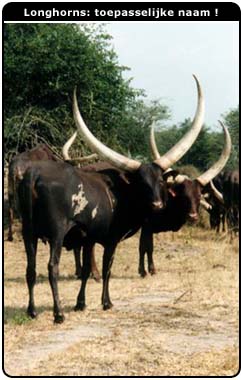 |
|
Longhorns,
what a suitable name for these animals. This is one of the best
looking ones, but we saw even wider horns, up to about 150 cm. |
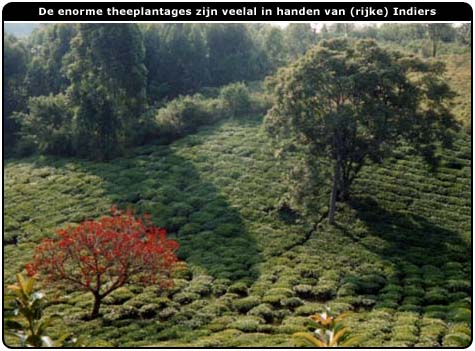
Babana's, sugar
cane. coffee and tea are cultivated most. Beautifull look outs we
had when driving to the next park with our bus. The tea plantations
were in many cases owned by rich Indians.
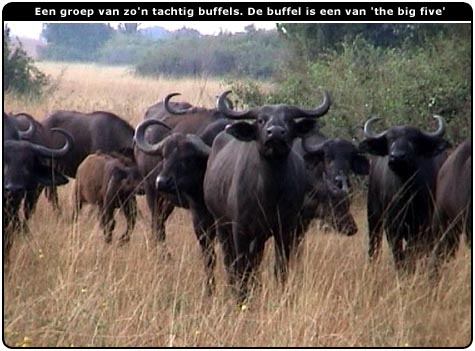
From Lake Bunynyi
we continued to Queen Elizabeth National Park. Because there was
a lot of rebellian activity in the north we could not visit Murchinson
Falls, which made Queen Elisabeth the biggest park we visited.
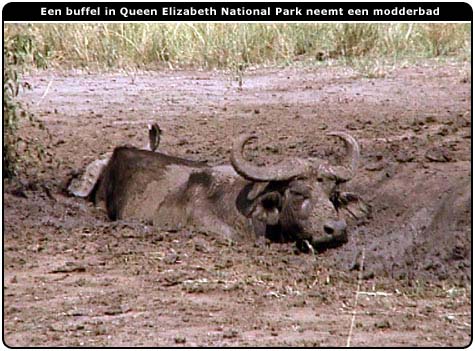
With the video
and photo camara stand by we went for a gamedrive directly after
we put up the tents. In that very first attempt we saw a lot of
different animals already. As you can see below we now completed
the 'big five': elephant, lion, leopard, buffalo and rhino. (the
leopard we have on video from a great distance and the rhino we
saw in Nepal.)
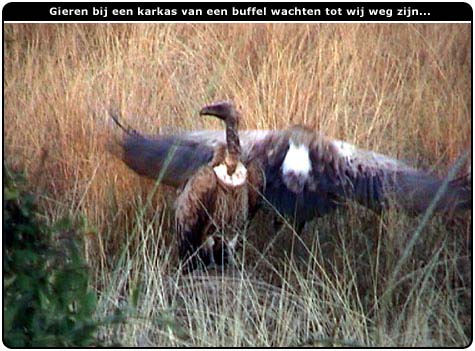
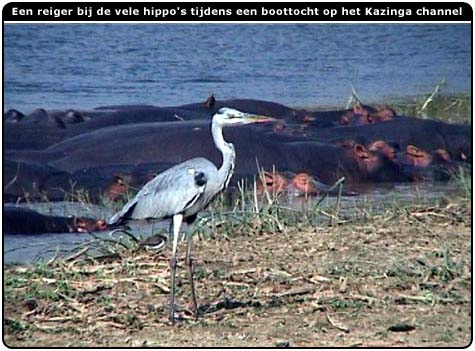
The hippopotamus (hippo), is one of the most
dangerous animals. On a yearly basis more people get killed by these
than by lions or crocodiles. In this park they have about 4000 of
them.
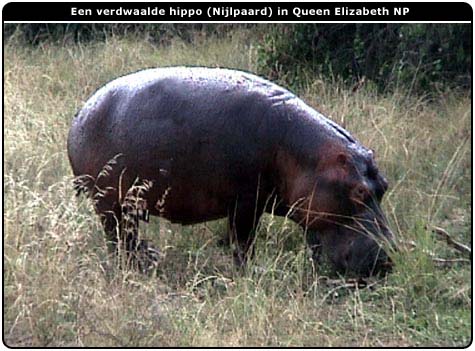
We only saw one lion, and it was a very ol
one as well... We spent hours and hours in the bus to find his friends,
but this is it...
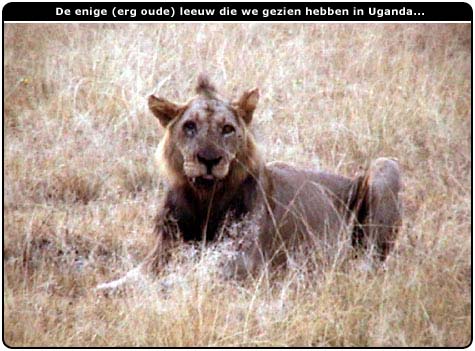
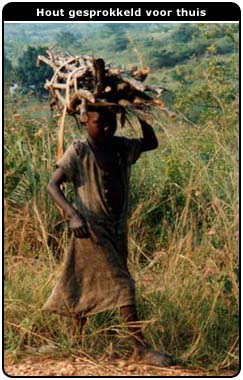 |
|
In
the park there are some villages, where the people live from
fishing or saltmaking (from crater lakes). The people leave
in between, with the animals and for them it is a normal day.
Life goes on, also in the 'weekend'. |
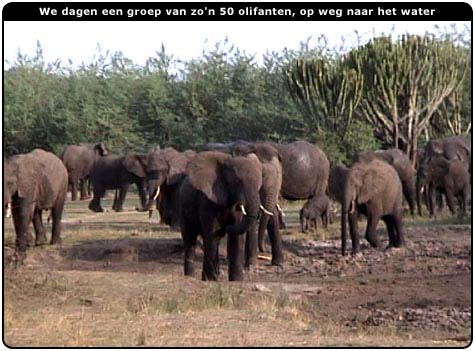
We saw about 50 elephants in one group near
the waterside of Lake Albert. Normally they live in groups of about
12 members, but towards the rain season this can rise to 200. In
this park there are about 1000 elephants.
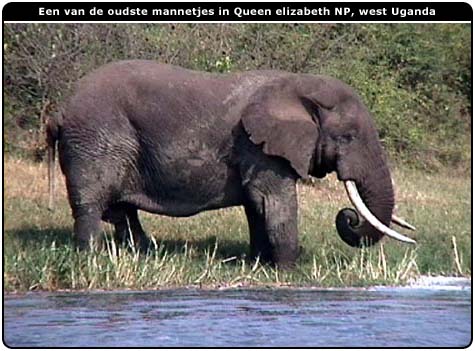
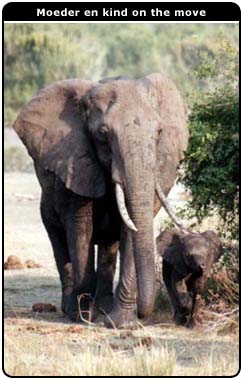 |
|
The
males (bull's) live separately from the females and children.
Above you see one of the oldest gentlemen and on the left a
female with her baby: one of the smallest we've seen.
The last park we visited was Kibale Forrest (near Fort Portal)
but the chimpansees that are supposed to be found here we only
heard, but never saw. That was a long day... |
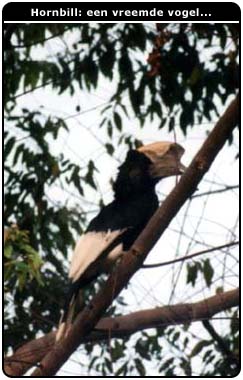 |
|
Time
to relax after this safari. We camped for some days at Bugali
island in Lake Victoria (This is the largest lake in Africa).
We stayed at the Hornbill campsite, with a Dutch owner. On the
left you see the strange bird this campsite is named after.
|
For me it was time
to go home, but Dominique stayed for another 3 weeks to work in this
orphanage in Kampala. We first visited the place first together; 45
children in the age of 0 to 4 who are abandoned by their parents or
are orphaned due to aids. A lot of good work can be done here.
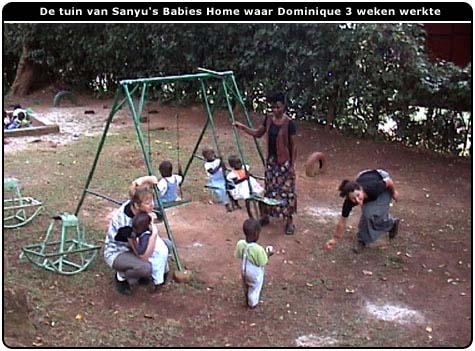
Beforehand I
was a bit 'affraid' about this holiday and the working plans, but
already on the first day in the city center my opinion turned around
completely. The people are very nice and willing to help out. We
did not see much misery like poverty, aids, malaria or beggars.
There are very few western people in this country with less than
5000 tourists a year. In fact, the impression was about the same
as the other countries we visited, although there is no real 'culture'
like temples of Maya's or Buddhists. But the gorilla's are a reasons
on it's own to go there once.
<
Maya Route - Japan >
|
